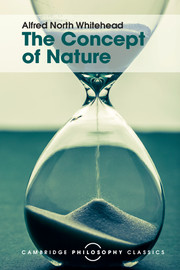2 - Theories of the bifurcation of nature
Published online by Cambridge University Press: 05 November 2015
Summary
In my previous lecture I criticised the concept of matter as the substance whose attributes we perceive. This way of thinking of matter is, I think, the historical reason for its introduction into science, and is still the vague view of it at the background of our thoughts which makes the current scientific doctrine appear so obvious. Namely we conceive ourselves as perceiving attributes of things, and bits of matter are the things whose attributes we perceive.
In the seventeenth century the sweet simplicity of this aspect of matter received a rude shock. The transmission doctrines of science were then in process of elaboration and by the end of the century were unquestioned, though their particular forms have since been modified. The establishment of these transmission theories marks a turning point in the relation between science and philosophy. The doctrines to which I am especially alluding are the theories of light and sound. I have no doubt that the theories had been vaguely floating about before as obvious suggestions of common sense; for nothing in thought is ever completely new. But at that epoch they were systematised and made exact, and their complete consequences were ruthlessly deduced. It is the establishment of this procedure of taking the consequences seriously which marks the real discovery of a theory. Systematic doctrines of light and sound as being something proceeding from the emitting bodies were definitely established, and in particular the connexion of light with colour was laid bare by Newton.
The result completely destroyed the simplicity of the ‘substance and attribute’ theory of perception. What we see depends on the light entering the eye. Furthermore we do not even perceive what enters the eye. The things transmitted are waves or—as Newton thought—minute particles, and the things seen are colours. Locke met this difficulty by a theory of primary and secondary qualities. Namely, there are some attributes of the matter which we do perceive. These are the primary qualities, and there are other things which we perceive, such as colours, which are not attributes of matter, but are perceived by us as if they were such attributes. These are the secondary qualities of matter.
- Type
- Chapter
- Information
- The Concept of NatureTarner Lectures, pp. 18 - 32Publisher: Cambridge University PressPrint publication year: 2015



